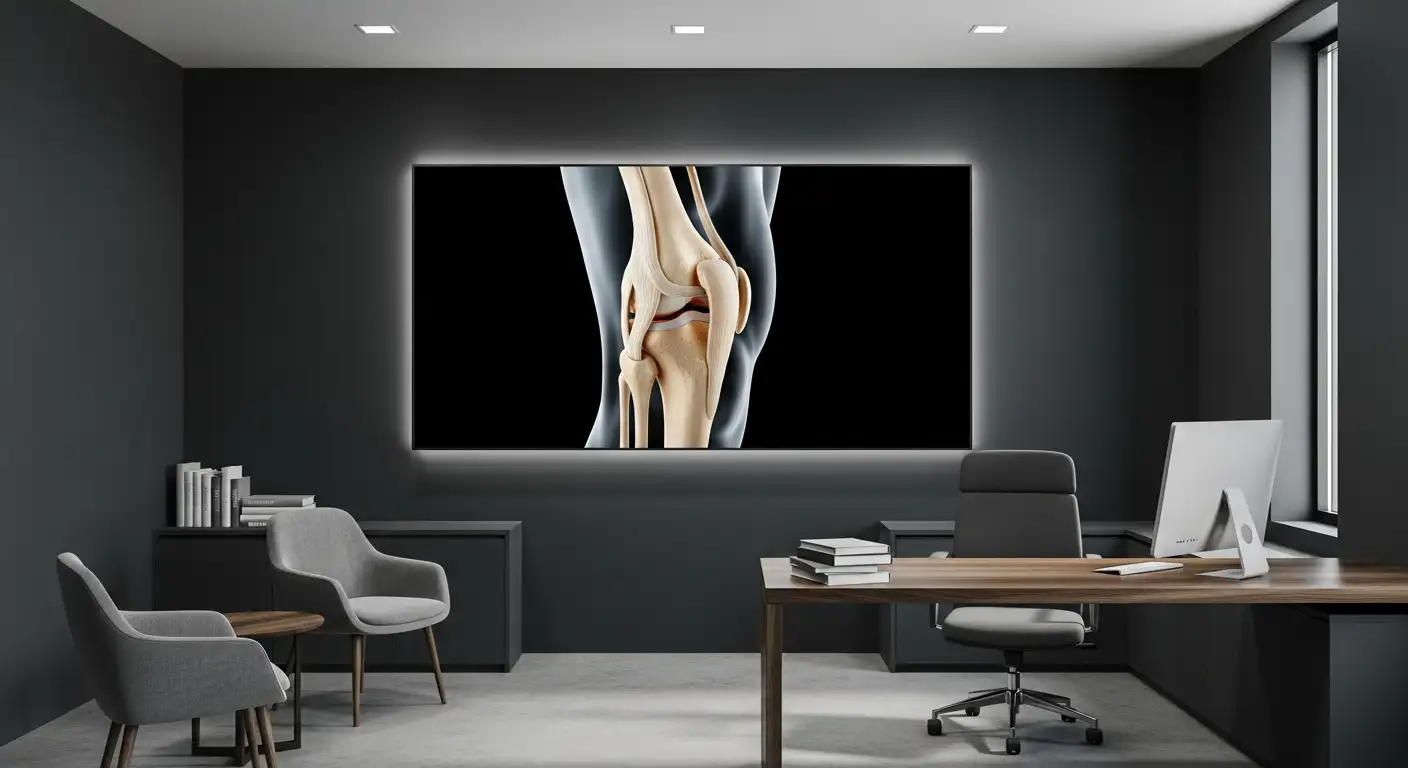Understanding Knee Pain
Knee pain is a common ailment affecting people of all ages. It can emanate from any of the bony structures compromising the knee joint, the kneecap, or the ligaments and cartilage of the knee. Knee pain can be caused by a variety of conditions, ranging from acute injuries to complications of medical conditions. Understanding the causes and impacts of knee pain is the first step towards finding the right treatment.

Causes of Knee Pain
Knee pain can be caused by a variety of factors. In some cases, it might be a result of an old injury, poor lower limb alignment, or specific types of exercise. When looking for the most effective treatments, it is necessary to consider the underlying cause of the pain. For instance, knee pain due to osteoarthritis or other issues may require a combination of treatments, such as exercise therapy, manual therapy, and injections, for substantial relief and improved overall function.
On a broader scale, knee pain can also be treated with nonsurgical and minimally invasive treatments, like physical therapy, activity modification, and oral medications. These methods provide relief for many patients [2].
Impact of Knee Pain
The impact of knee pain can be significant, especially when it progresses to chronic pain. It can limit mobility, reduce quality of life, and lead to other health conditions if left untreated. The prevalence of osteoarthritis (OA), one of the most common causes of knee pain, has been rising exponentially in recent years. Knee osteoarthritis (KOA) is the most common type, affecting 22.7% of the general population in the United States between 2013 and 2015.
Given the high prevalence and impact of knee pain, it is crucial to explore innovative knee pain treatments that can provide effective relief and improve quality of life. From non-surgical options to breakthrough procedures and digital health interventions, various strategies can help manage knee pain and keep it from interfering with daily life. The objective is to provide an overview of these innovative solutions, highlighting their benefits and potential applications in the treatment of knee pain.
Non-Surgical Knee Pain Treatments
In the realm of non-surgical treatments for knee pain, there have been significant strides in the development of innovative solutions. These treatments primarily focus on harnessing the body's own healing mechanisms to alleviate pain and improve function. The following sections will delve into three non-surgical knee pain treatments — platelet-rich plasma injections, stem cell therapy, and viscosupplementation.
Platelet-Rich Plasma Injections
Platelet-rich plasma (PRP) injections have emerged as a promising solution within the realm of innovative knee pain treatments. This procedure involves injecting a concentrated solution of the patient's own platelets into the affected knee joint. The rationale behind PRP therapy lies in the platelets' ability to release growth factors that enhance the body's natural healing process [4].
PRP therapy is a minimally invasive treatment for knee pain that can potentially reduce the need for surgery. However, more research is needed to determine the long-term effectiveness and safety of PRP therapy in treating knee pain [5].
Stem Cell Therapy
Stem cell therapy is another cutting-edge approach that is being investigated for its potential in treating knee pain. This treatment utilizes the body's own regenerative capabilities to promote healing and potentially reverse damage in the knee joint.
The procedure involves extracting stem cells from the patient's body, typically from bone marrow or fat tissue, and injecting them into the affected knee joint. The premise is that the stem cells will differentiate into cartilage cells and help to repair the damaged joint. As with PRP therapy, more research is needed to validate the effectiveness and safety of stem cell therapy in knee pain treatment.
Viscosupplementation
Viscosupplementation is a non-surgical procedure that involves injecting hyaluronic acid derivatives into the knee joint. Hyaluronic acid is a naturally occurring substance in the joint fluid that provides lubrication and shock absorption. In people with knee pain, the quality and quantity of hyaluronic acid may be diminished.
The injection serves to replenish the hyaluronic acid in the joint, thereby improving lubrication and reducing pain. This treatment offers a non-invasive option for managing knee pain, particularly for those who have not responded to other conservative treatments.
While these innovative knee pain treatments offer hope for non-surgical relief, it's important to note that they are still being studied for their long-term effectiveness and safety. It's recommended to discuss these options with a healthcare provider to determine the best approach for individual knee pain management.
Innovative Procedures for Knee Pain
Understanding and managing knee pain has seen significant advancements with new techniques and procedures. Among the innovative knee pain treatments are radiofrequency ablation, cryoablation, and infrared light therapy. These methods offer non-invasive solutions to improve the quality of life for individuals suffering from knee pain.
Radiofrequency Ablation
Radiofrequency ablation (RFA) offers a cutting-edge approach to knee pain management. This non-surgical treatment involves the use of heat to alleviate knee pain. RFA targets specific nerve endings responsible for knee pain, thus reducing the pain signals sent to the brain and providing relief for patients. By doing so, this method can provide relief without resorting to invasive procedures.
Cryoablation
Cryoablation is another innovative treatment for knee pain. This technique involves freezing the nerves that send pain signals to the brain. By interrupting the pain transmission, cryoablation can provide significant pain relief for those suffering from knee pain. This method is especially beneficial for those who have not found relief with traditional pain management techniques.
Infrared Light Therapy
Infrared light therapy represents a non-invasive treatment option for knee pain management. It employs infrared waves to stimulate healing and reduce inflammation in the knee joint. This method can help improve symptoms and function in individuals experiencing knee pain. Infrared light therapy is a promising treatment that can be used alongside other therapies for comprehensive knee pain management.
These innovative knee pain treatments provide promising alternatives to surgical interventions. They offer effective pain relief and improved joint function, helping individuals suffering from knee pain to regain mobility and enjoy a better quality of life. As technology advances, we can expect to see more of these innovative treatments being developed in the future.
The Role of Digital Health in Knee Pain Management
In the field of innovative knee pain treatments, digital health plays an increasingly pivotal role. The rise of digital technology offers new avenues for managing knee pain, providing patients with accessible resources and personalized care plans. These range from digital patient education to digital health and exercise interventions.
Digital Patient Education
Digital patient education has shown improvements in disease-related knowledge for knee osteoarthritis (KOA) and knee replacement (KR) patients. When used alongside traditional methods of patient education, digital resources can significantly enhance a patient's understanding of their condition and available treatments. These resources include websites, mobile apps, and social media platforms, among others.
Digital Health Interventions
Digital health interventions that incorporate personalized motivational messages, biofeedback, or patient monitoring have proven more effective in enhancing physical activity than self-directed digital interventions. Additionally, digital health interventions utilizing cognitive behavioral therapy or similar psychological interventions have led to significant enhancements in knee pain, function, and psychological health in KOA and KR patients.
Digital Exercise Interventions
Digital exercise interventions have shown comparable effectiveness to in-person physical therapy for individuals with KOA. For KR patients, digital exercise interventions incorporating a mix of in-person and web-based treatments, communication with clinicians, and multi-technology systems have been successful in improving knee range of motion, reducing hospital stays, and alleviating self-reported symptoms. This highlights the potential of digital exercise interventions as part of the broader landscape of innovative knee pain treatments.
Overall, digital health technologies offer promising opportunities for knee pain management, providing accessible, personalized, and effective solutions. As technology continues to evolve, so too will the potential for its application in knee pain treatment, promising exciting advancements in the future of healthcare.
The Future of Knee Pain Treatments
As we continue to embrace technological advancements and medical breakthroughs, the future of innovative knee pain treatments looks promising. This section will delve into three areas where exciting progress is being made: 3D technology for knee osteoarthritis, regenerative medicine techniques, and ongoing clinical trials.
3D Technology for Knee Osteoarthritis
Three-dimensional (3D) technology is a burgeoning field in the treatment of knee osteoarthritis. This innovative approach focuses on producing replacement cartilage that is custom-designed for each patient, potentially providing a more comfortable solution that lasts longer than traditional treatments.
The potential for 3D technology to slow down the progression of knee osteoarthritis and provide long-term relief for patients suffering from knee pain is exciting. However, it is important to note that the development of this technology for knee osteoarthritis treatment is still in its early stages, with ongoing research and clinical trials needed to further evaluate its effectiveness and long-term benefits for patients.
Regenerative Medicine Techniques
Regenerative medicine techniques, including platelet-rich plasma (PRP) therapy and stem cell therapy, are gaining attention in the field of knee pain management. These techniques harness the body's own healing mechanisms to potentially alleviate pain and repair damaged tissue.
However, as with any new treatment approach, more studies are needed to validate their effectiveness and safety in knee pain treatment. As research progresses, these regenerative medicine techniques may offer a promising alternative to traditional knee pain treatments.
Ongoing Clinical Trials
Clinical trials are the backbone of modern medical research, playing a crucial role in advancing our understanding of knee pain treatments. Ongoing clinical trials are currently exploring the use of regenerative therapies, such as platelet-rich plasma (PRP) and mesenchymal stem cells (MSCs) injections, for knee osteoarthritis.
These treatments have shown promise in pain alleviation, restoration of functional capacity, and tissue repairment, making them a potential game-changer in knee pain treatment [3]. As these trials progress, they may open doors to new, effective, and innovative knee pain treatments.
In conclusion, from 3D technology to regenerative medicine techniques and clinical trials, the future of knee pain treatments is evolving rapidly. While these advancements offer exciting possibilities, it's important to remember that ongoing research is crucial to fully understand their potential benefits and risks. As always, patients should consult with their healthcare provider before starting any new treatment.
References
[1]: https://www.medicalnewstoday.com/articles/311280
[2]: https://www.memorialhermann.org/services/treatments/knee-pain-treatments/nonsurgical-and-minimally-invasive-treatments-for-knee-pain
[3]: https://www.ncbi.nlm.nih.gov/pmc/articles/PMC7577352/
[4]: https://stemcellarthritis.com/joint-pain/nonsurgical-treatment-knee-pain/
[5]: https://www.mayoclinic.org/diseases-conditions/knee-pain/diagnosis-treatment/drc-20350855
[6]: https://www.ncbi.nlm.nih.gov/pmc/articles/PMC9218886/
[7]: https://theconversation.com/the-3d-technology-that-could-revolutionize-the-treatment-of-osteoarthritis-of-the-knee-163215





